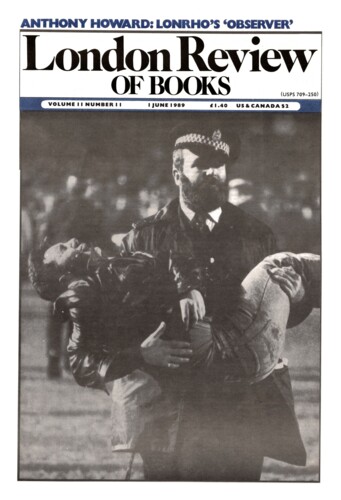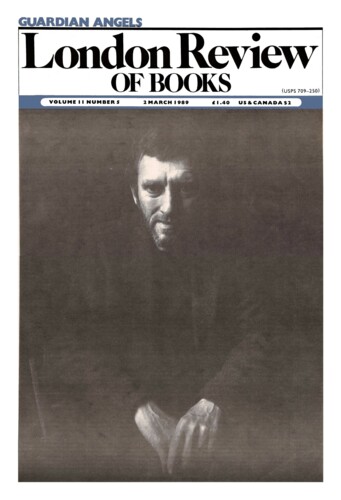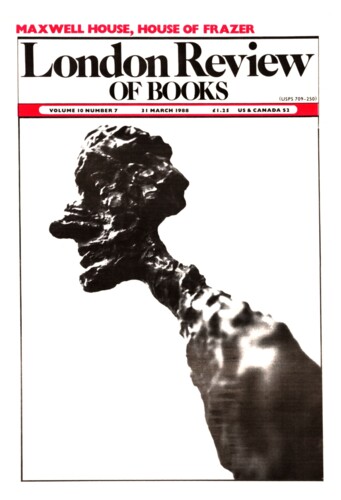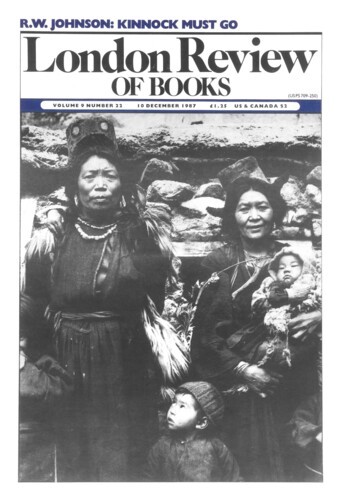Non-Eater
Patricia Craig, 3 December 1992
Jenefer Shute’s Life-Size comes garnished with a quote from Fay Weldon, in which enthusiasm has got the better of taste: ‘Terrific! I devoured it at a sitting.’ ‘Devour’ is not a word one would choose to apply to a novel about the suppression of appetites, however jocularly. This book is full of rage and disgust. ‘They say I’m sick, but what about them, all of them, who think nothing of chewing on a carcass, sinking their teeth into muscle and gristle and blood?’ Thus muses the first-person narrator of Life-Size, five foot two inches, weighing less than seventy pounds; Josie, a graduate student in economics, is far advanced along the line of self-starvation. Anorexia nervosa has her in its grip. She has gone far beyond temperance – the observation quoted above needn’t seem all that askew if you take it as a prescription for vegetarianism, not near-abstinence – into some ferocious realm of self-denial. Finally her flatmate has contacted her parents and Josie is now installed in hospital, where she battles to maintain the lowest possible weight, to this end subjecting her breakfast, lunch and dinner trays to uncompromising scrutiny. All right, faced with a plateful of corpses, embryos and fluid from mammary glands, who wouldn’t baulk? But there’s more to this recoil of Josie’s than just calling things by their proper names.’





